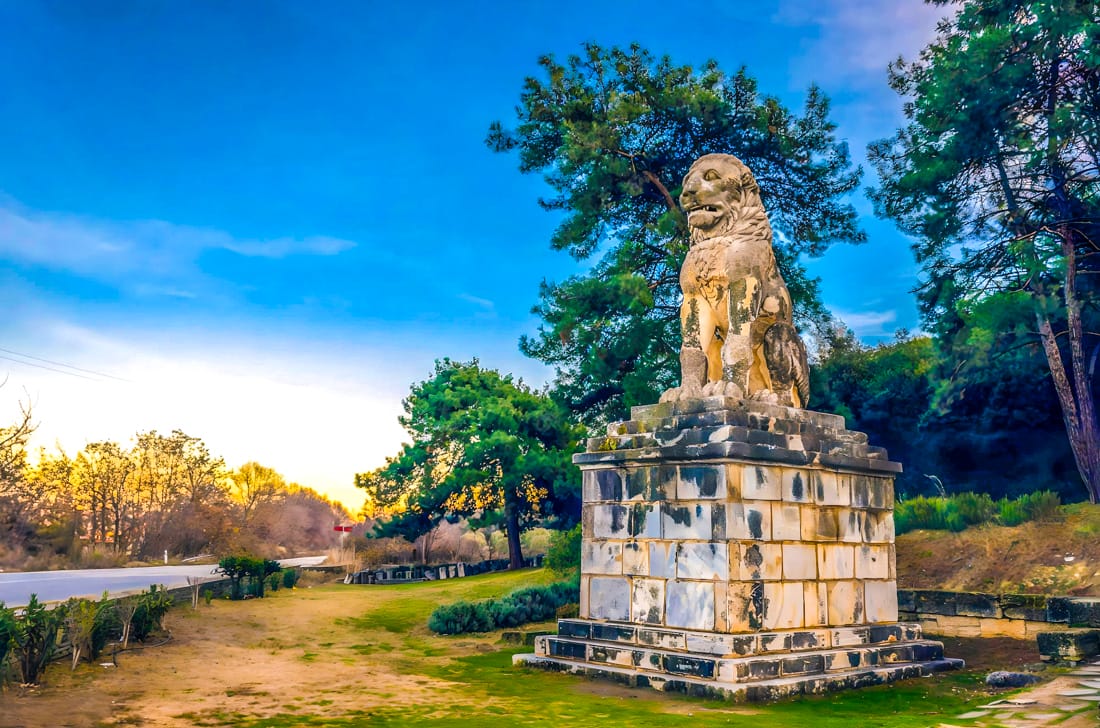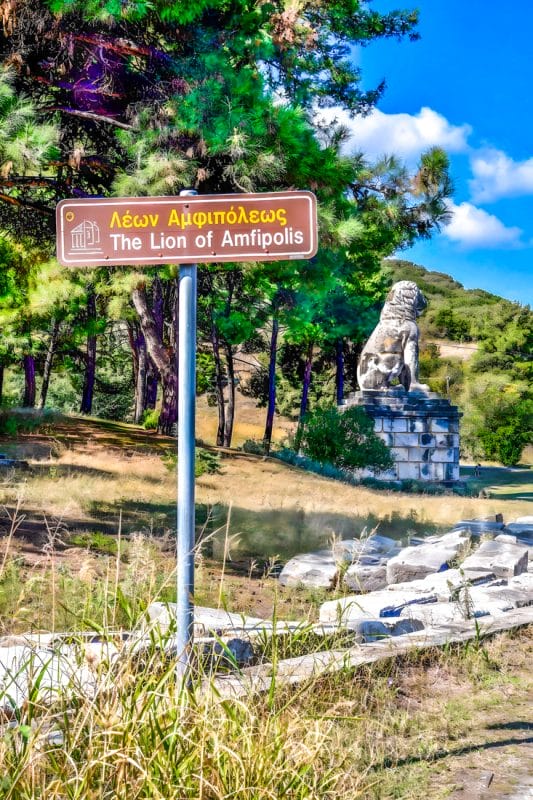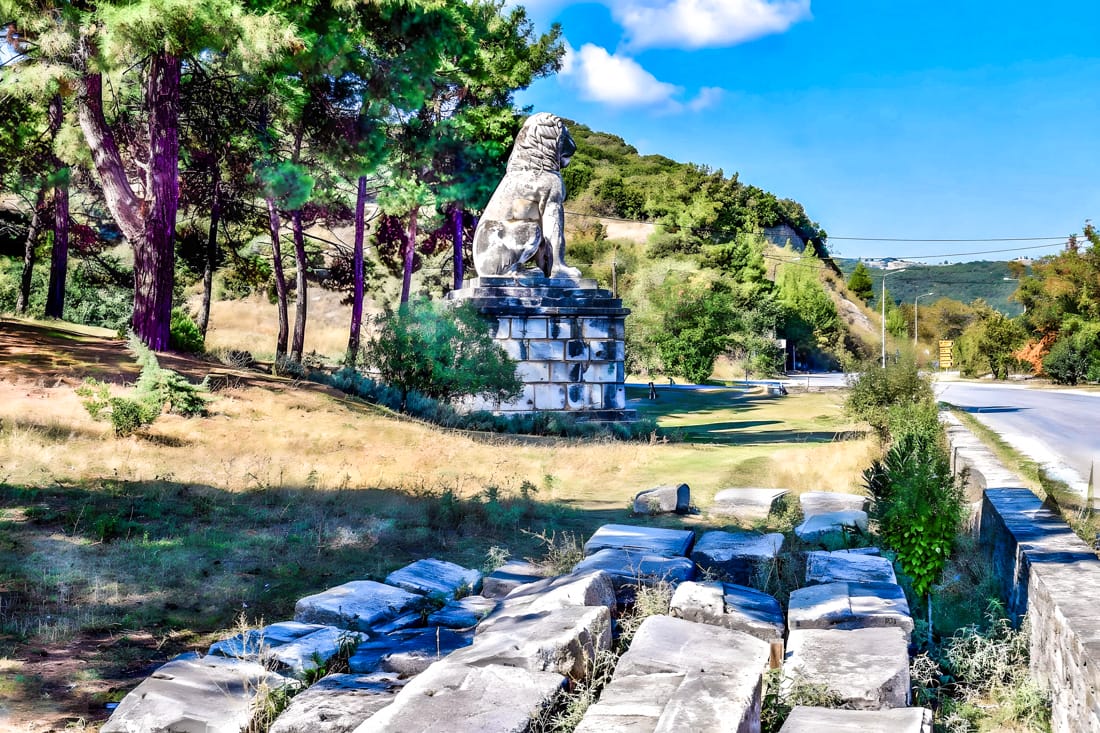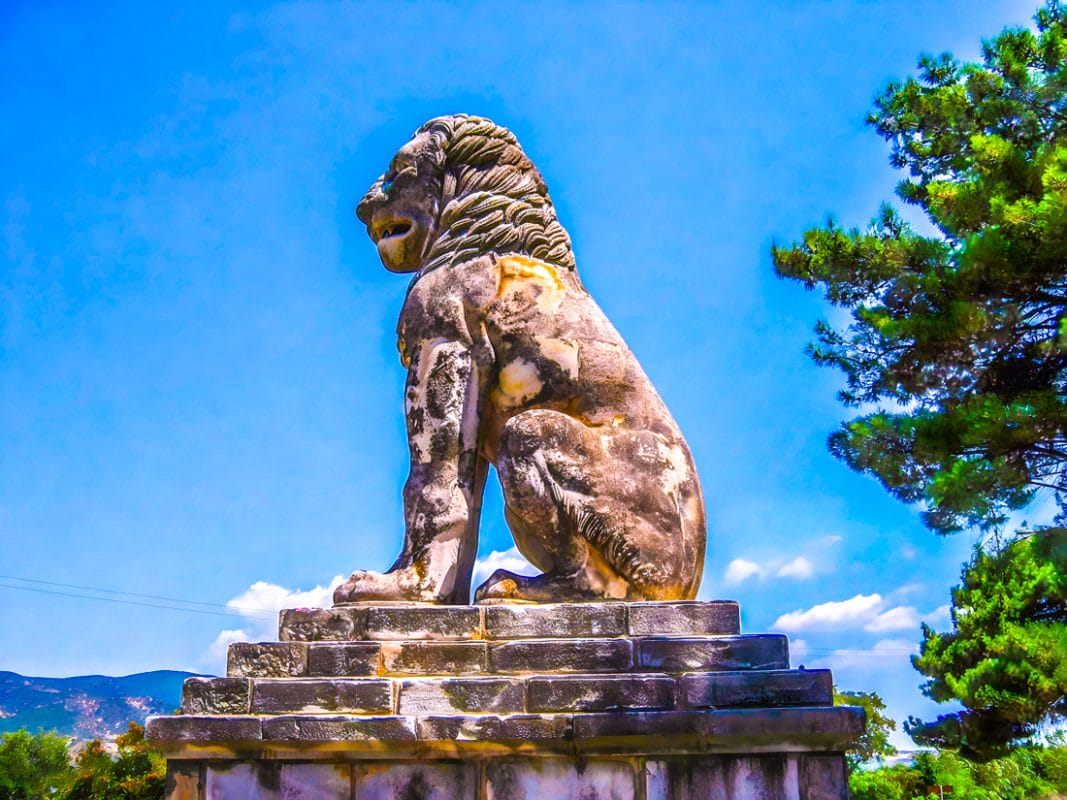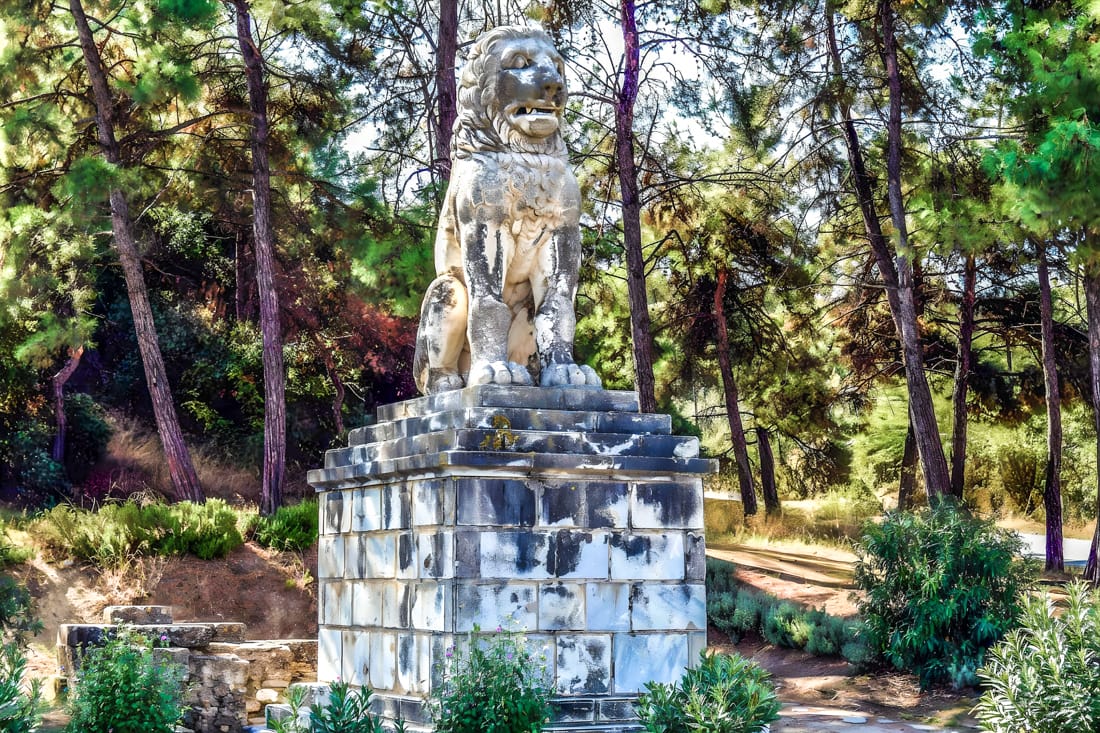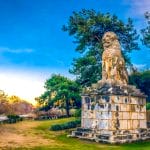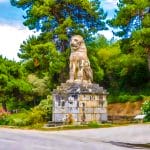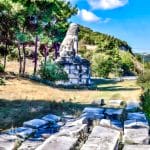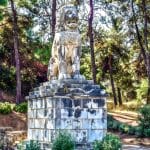Lion of Amphipolis
The Lion of Amphipolis is undoubtedly one of the most significant preserved monuments of the 4th century BC. It has been restored and stands next to the old bridge of Strymonas river at the regional street Amphipolis-Serraiki Akti. After the last discovery of the funerary enclosure of the “Kasta” mound in ancient Amphipolis, according to the research results of the 28th Ephorate of Prehistoric and Classical Antiquities, the burial monument of the Lion is closely related to the grave marker of the burial mound, which is in fact its foundation and is placed in the central and highest point of the mound, also following the geometry of the enclosure.
“The excavation of the burial mound, which is in progress, has brought to light an important funerary enclosure, unique in its kind, which is dated to the last quarter of the 4th century BC, with marble bases, jambs, crownings and other superstructure parts, of 3m height, and a total length of 497 m. So far 300 metres have been excavated. The unique construction of the funerary enclosure with the use of architectural members of Thasian marble, and the important historical period during which it was built, led us to assume that there are important tombs within the enclosure, which only the continuation of the excavation survey will reveal.
The Tomb of Kasta Amphipolis and the monument of the Lion have comparable architectural features and they both date back to the last quarter of the 4th century BC. The brecciae (fragments of marble processing) found near the grave marker at the top of the Kasta mound, show that there is a big marble monument, namely the Lion and its base” said Director of the 28th EPCA Katerina Peristeri.
You must be logged in to submit a review.
REVIEWS
That ancient masterpiece which every Greek should be proud of needs maintenance immediately, despite that looks like it is abandoned somewhere in fields.
Lion misreported and not visible from afar because hidden behind pine trees. It is located near the Strymon River (right bank), after crossing the metallic yellow bridge. Dating from the 4th century BC, it was reconstituted in 1937.

